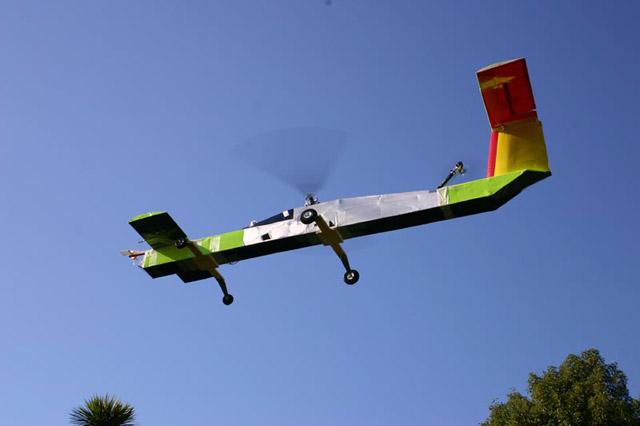An Australian bid to combine the vertical lift capability of rotorcraft with the level flight speed of fixed wing aircraft is claiming a significant step forward with the successful inflight transition between fixed and rotary wing flight for a prototype of its Hybrid RotorWing concept.
So-called stoprotor concepts – in which an aircraft would take off and land like a helicopter but lock the rotor in a three-and-nine o’clock position to act as a fixed wing – go back to the 1970s. These designs have proved impractical though, owing to aerodynamic instability inherent in the difference in lift produced by advancing and retreating rotor blades; control has proved difficult when attempting to stop the lift rotors while in forward flight to lock them into fixed wing position.
| |
| StopRotor Technology |
StopRotor Technology founder Rowan Watkins believes his RotorWing concept overcomes this practical hurdle by lifting the nose of the aircraft to nearly 90°, so as to make the transition between modes with the airflow aligned with the rotor axis, rather than the fuselage. Then, he says, the airflow can be used to stop or start the rotor system - just as in power generating wind turbines and propellers.
As Watkins explains, when the rotor is started or stopped aerodynamically there is no torque applied to the airframe, as there would be with a mechanical braking system, so the aircraft remains more stable.
He claims recent tests with an electric-powered, radio-controlled 2m-long, 7kg prototype have proved this concept for in-flight transition between fixed and rotary wing modes.
Watkins and his wife Deanne are working on an improved prototype for further testing but, he says, serious progress will require an aerospace industry partner. Watkins says he has been approached by “a number” of aerospace companies, including an enquiry about collaboration for the US Defense Advanced Research Projects Agency’s VTOL X-Plane specification for a hybrid VTOL and conventional aircraft.
Source: Flight International

















